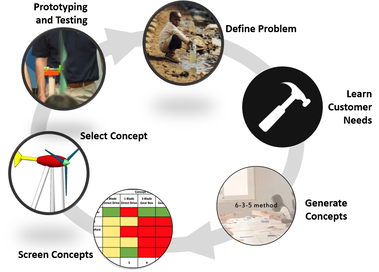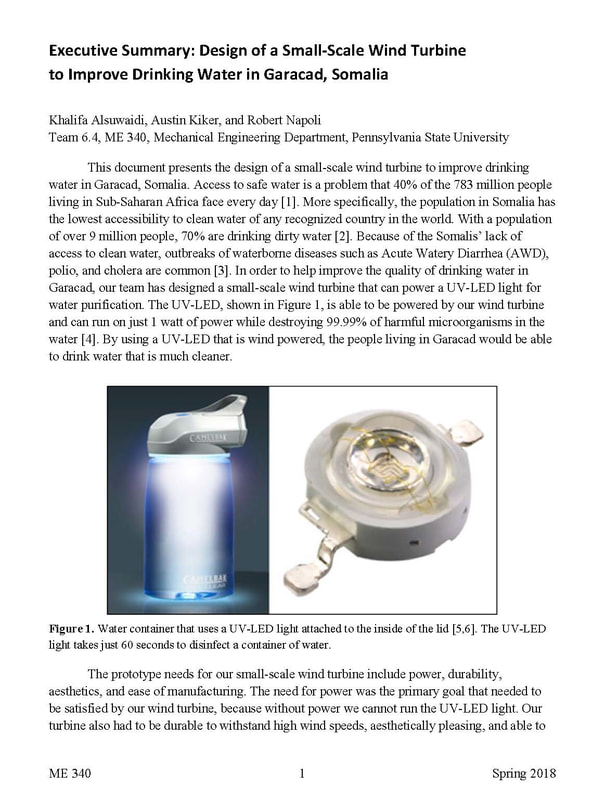Design Reports
|
Design reports are written to show how engineers use the design process to arrive at an effective design. A design begins with a problem that a customer needs solving. The design process can follow many strategies, but the main steps usually involve identifying customer needs, generating design concepts, narrowing and selecting a design concept to prototype, and then testing and redesigning a series prototypes to arrive at a final design. This section shows example documents that follow the design process. Included are special templates to teach students how to write such documents.
Presentation of Proposed Design. Joshua Rosato, Kirby Perosa, Tom Heller, and Kate Ferster present a proposed design concept for a small-scale wind turbine to run a low-power application. Pay attention to how the presenters designed the visual aids such that the audience can follow the details of the decision-making process. Also pay attention to the way that the members present as a team. Presentation of Final Design. Evan Dibiase, Michael Lacey, and Mark Frederick present a final design of a small-scale wind turbine to run a low-power application. Pay attention to how detailed information is presented in a way that the audience can follow. Also, play attention to how the team incorporates a demonstration into the talk. Finally, pay attention to the transitions between team members. |
|

